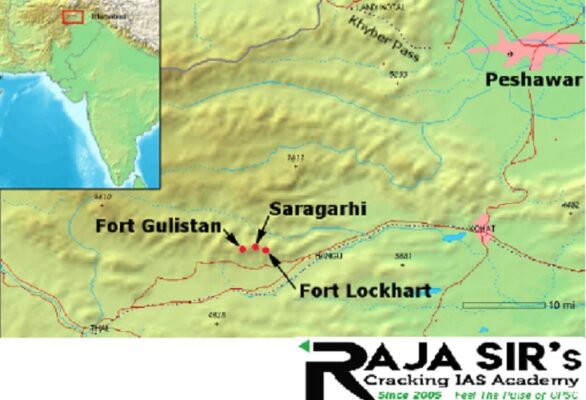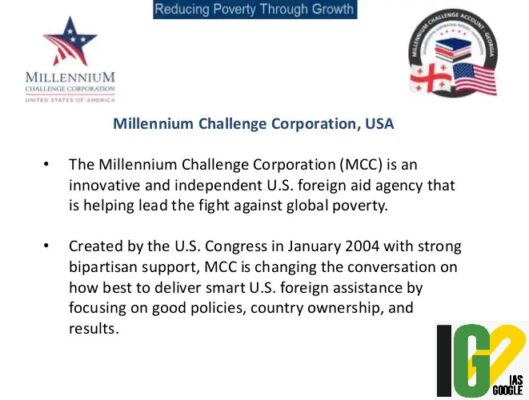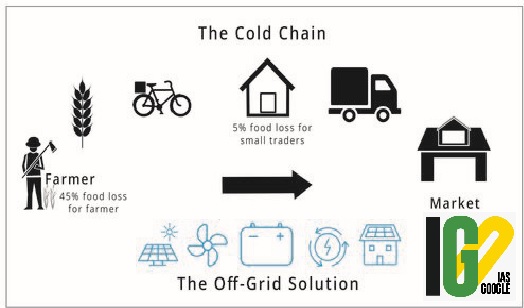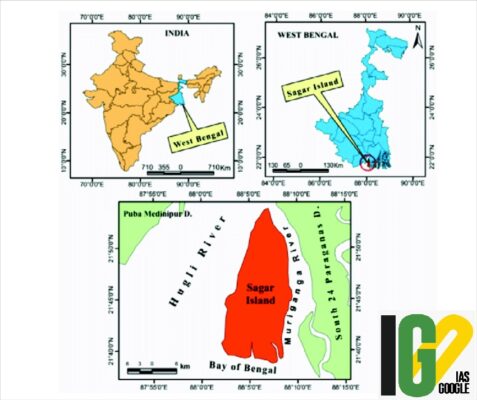- Home
- Prelims
- Mains
- Current Affairs
- Study Materials
- Test Series
20th Sep 2021
WHAT A NEW STUDY SAYS ABOUT FOSSIL FUEL EXTRACTION AND GLOBAL WARMING
A new study conducted by researchers from University College London says about fossil fuel extraction and global warming.
Highlights of the study:







- The global oil and gas production should decline by three per cent per year until 2050 to keep global warming to below 1.5 degrees Celsius, which is the target set by the 2015 Paris Climate Agreement.
- Global fossil fuel extraction needs to go down.
- As of now, both planned and operational fossil fuel extraction projects are not conducive to meeting the targets set out by the climate agreement signed in 2015.
- A substantial number of regions in the world have already reached their peak fossil fuel production and that any increase in fossil fuel production will have to be offset by a decline elsewhere, if the goal wants to be achieved.
- The required unextracted reserves need to be 58 percent for oil, 59 percent for fossil methane gas and 89 percent for coal by 2050.
- These percentages of fossil fuels need to remain unextractable if global warming targets are kept in mind.
- Specifically for coal, the unextractable estimates show less variation across regions.
- They are lowest in those regions that utilize most coal in the next 30 years, notably India, China and other parts of Asia (ODA).
- The Paris Climate Agreement that was signed by 195 countries in 2015 has set out a goal to limit climate change in the coming decades.
- Aim: To slow the process of global warming by making efforts to hold the increase in the global average temperature to well below 2 degrees above pre-industrial levels and to pursue efforts to limit the temperature increase to 1.5 degrees above pre-industrial levels.
- The agreement came into force on November 4, 2016.
- As of now, human activities have already caused global temperatures to rise by about 1 degree Celsius above pre-industrial levels (1950-1900).
- The global cost of air pollution from fossil fuels was around $2.9 trillion per year, or $8 billion per day, which was 3.3 per cent of the world’s GDP at the time.
- India is estimated to bear a cost of $150 billion from air pollution caused by fossil fuels.
- The fernery is home to many fern species, some of which are endemic to the state, some hold medicinal value while some are threatened species.

- The fernery has the largest collection of fern species, second to Jawaharlal Nehru Tropical Botanical Garden and Research Institute (TBGRI), Thiruvananthapuram.
- It spreads over four acres of land at an altitude of 1,800 metres.
- It provides an apt location for developing an open-air fernery.
- It has been developed by the Research Wing of Uttarakhand Forest Department. Central Government’s CAMPA scheme.
- It has 120 different types of ferns.
- The fernery has a mix of species from the western Himalayan region, the eastern Himalayan region, and the Western Ghats.
- It houses several rare species, including Tree Fern, a threatened species by the State Biodiversity Board of Uttarakhand.
- It houses around 30 species of medicinal ferns such as Hansraj, which has huge importance in Ayurveda as a remedy for ailments.
- Ferns are non-flowering pteridophytes. They generally reproduce by producing spores.
- Ferns are the first plant with a fully developed vascular system.
- About 9% of the world’s Pteridophytes occur in India.
- Ferns are the second largest group of plants in Indian flora, are represented by 33 families 130 genera and 1,267 species.
- 70 species among these are endemic to India.
- Ferns have 3 major parts – the rhizome, the fronds and the reproductive structures called sporangia.
- Rhizome: The rhizome is the stem of the fern plant. It comes in 3 basic forms:
- An erect rhizome: It is a solid mass that gives rise to a tuft of fronds. It can be found on a king fern or a crown fern.
- A laterally growing rhizome: creeps along the ground. It may even climb up a tree. Hound’s tongue and thread ferns are examples of a fern with a creeping rhizome.
- A vertical rhizome: This can grow into a short or a tall trunk. The trunk of the ponga (silver fern) is a vertical rhizome.
- Fonds:
- The fronds are the leaves of the fern. There is usually a stalk with a flat blade often divided into segments.
- Fronds have a dual function. They are present for photosynthesis and for reproduction.
- Ferns are unique amongst land plants in that they have 2 separate living structures in their reproductive cycle – the sporophyte and the gametophyte.
- They are used for medicinal and edible purposes.
- The indicators of moisture, ferns, clean the ecosystem and are good nitrogen fixating agents.
- They are used to filter heavy metals from polluted waters and are a bioindicator for the health of an ecosystem.
- Ferns provide microhabitats, as well as shelter and shade to small animals, are a source of food or medicine for animals, including people.

- The Battle is considered one of the finest last stands in the military history of the world.
- Twenty-one soldiers fought against over 8,000 Afridi and Orakzai tribals but they managed to hold the fort for seven hours.
- The soldiers of 36th Sikhs (now 4th battalion of Sikh regiment), led by Havildar Ishar Singh, fought till their last breath, killing 200 tribals and injuring 600.
- Saragarhi was the communication tower between Fort Lockhart and Fort Gulistan in North West Frontier Province (NWFP), now in Pakistan.
- The forts were built by Maharaja Ranjit Singh but renamed by the British.
- Saragarhi helped to link up the two important forts which housed a large number of British troops in the rugged terrain of NWFP.
- Saragarhi was usually manned by a platoon of 40 soldiers, on the day of battle it was being held by only 21 soldiers from 36th Sikh (now 4 Sikh) and a non-combatant called Daad, a Pashtun who did odd jobs for the troops.
- The tribals wanted to isolate the two forts by cutting off the lines of communication between them.
- He was born in a village near Jagraon in Punjab, India.
- He joined the Punjab Frontier Force and was drafted into the 36th Sikhs.
- He was given independent command of the Saragarhi post.
- He led the troops in the battle and displayed gallant conduct.
- Making a departure from the tradition of not giving gallantry medals posthumously, Queen Victoria awarded the 21 dead soldiers the Indian Order of Merit (comparable with the Victoria Cross) along with two ‘marabas’ (50 acres) and Rs 500 each.
- Nepal and the United States signed the MCC agreement in 2017.

- The Millennium Challenge Corporation (MCC) is an innovative and independent U.S. foreign assistance agency that is helping lead the fight against global poverty.
- MCC forms partnerships with developing countries who are committed to good governance, economic freedom and investing in their citizens.
- Under the MCC programme, the US government will provide the grant assistance which will be mainly utilised on strengthening Nepal's transmission line that would facilitate the export of hydro-electricity to India in the near future and also improve the country's road networks.
- Objective: To eradicate poverty by fostering economic growth.
- The processing unit will benefit everyone at the local level. It will add to the development of India’s food processing sector.
- The Ministry has approved 41 mega food parks, 353 cold chain projects, 63 Agro-processing clusters, 292 food processing units, creation of 63 backward and forward linkages projects, and 6 operation green projects across the country under Pradhan Mantri Kisan Sampada Yojana (PMKSY).
- This includes 62 cold chain projects in Maharashtra and 23 in Uttar Pradesh.
- The unit will provide direct and indirect employment to about 700 persons.
- Provide Benefits to 1,000 farmers in the Central Processing Centre (CPC) and Primary Processing Centers (PPC) catchment areas.
- Provides facilities such as packing machines, water treatment plants, water storage tanks, subsystems, fittings, etc.

- Cold Chain, Value Addition, and Preservation Infrastructure, is a centrally sponsored scheme launched in 2008.
- It is a component of Pradhan Mantri Kisan Sampada Yojana (PMKSY).
- It was created to reduce post-harvest losses of horticulture and non-horticulture produce and provide remunerative prices to farmers for their produce.
- An infrastructure facility is created for the entire supply chain, including pre-cooling, weighing, sorting, grading, packing facility, blast freezing, etc. of agricultural produce.
- To provide integrated cold chain and preservation infrastructure facilities, without any break, from the farm gate to the consumer.
- Reduces the loss of agricultural and other perishable commodities like fruits & vegetables, meat, food, etc. till it reaches the consumers.
- Preserves and extends the shelf life and safeguards the nutrient quality of products.
- Improves domestic food supply, leads to improved nutrition and food safety, adds to farmers income.
- New jobs would be created all along the Cold Chain.
- The scheme allows flexibility in project planning with special emphasis on creation of cold chain infrastructure at farm level.
- It is set up by Partnership Firms, Companies, Corporations, Self Help Groups (SHGs), Farmer Producer Organizations (FPOs), NGOs, Central / State PSUs, etc.
- Women-run self-help groups (SHG) from backward districts of India fought the pandemic with innovation.
- They manufactured essential medical products such as masks, sanitisers, protective equipment and ran community kitchens, provided financial support to the vulnerable and communities.
- These SHGs also fight against gender discrimination in rural India. As many as 67 million Indian women are members in six million SHGs.
- World Bank gave $750 million in financial support to National Rural Livelihoods Mission.
- The government of India announced financial support to over 0.4 million SHGs through Rs 1,625 crore in funds August 12, 2021, under the Atma Nirbhar Bharat (self-reliant India) programme.
- Central government has provided financial support to Micro Food Processing Enterprises (PMFME) and Farmer Producer Organizations (FPOs).
- Government initiatives have encouraged women citizens to have a bank account, which has made it easier to procure loans for SHGs.
- SHGs have shown satisfactory results by bringing down banks’ non-performing assets.
- New reforms have been incorporated in the sustainable development model by creating self-reliant economy and inspiring women to explore the global market.
- Lack of understanding about core values of business
- A loss of interest in doing business due to socio-cultural pressure
- Poor presentation skills and zero knowledge transfer
- Poor financial knowledge and lack of management
- Poor marketing and promotional skills
- Short-term orientations and lack of proper road map for the next phase
- Lack of well-defined policies for SHGs
- Lack of understanding on importance of UN mandated Sustainable Development Goals.
- Roadblocks compounded by traditional malpractices.
- Proper Policy design focussed on the challenges faced by women SHGs
- Providing funds and successful pilot implementation of large-scale projects
- Creating a gender-neutral ecosystem for women entrepreneurs, develop adequate infrastructure, provide training, destroy red-tapism, omit the role of middle-man, establish a platform for knowledge transfer, financial assurance, create innovative mentorship programs, connect various stakeholders such as non-profits, government bodies & institutes.
- Specialised training should be given on climate change, clean energy, disaster management, water, etc.
- SHGs should be inspired to explore other sectors as agriculture, handicrafts, renewables, watershed development, alternative tourism, finance, education
- Development activities should be conducted keeping in mind socio-geographical factors and designed according to the requirements of end-implementers.
- Mechanism of monitoring and evaluation of the projects as per the global standards.
- CSR support, international funding, multilateral bank support should be given to SHGs.
- Innovative ideas should be incubated and relaxations and special assistance should be given to SHGs for tenders and expression of interest.
- A dedicated grievance resolving mechanism and Integrated common facility centre will help promote activities.
- A multidisciplinary committee should be instituted to improve the condition of women SHGs in India, with a mentorship programme to guide SHGs to survive in the hard, competitive market.

- Sagar Island is the southernmost part of West Bengal, and is a religious spot for Hindu pilgrims.
- It is an island in the Sunderban, an unspoiled beach on the estuary of the mighty Ganga.
- It is cut off from the main land by Muriganga river.
- The island of Sagardwip is one of the most famous Hindu pilgrimage centers in India.
- Every year on Makar Sankranti, pilgrims gather for a holy dip at the confluence of the river Ganga and the Bay of Bengal.









 Latest News
Latest News
 General Studies
General Studies